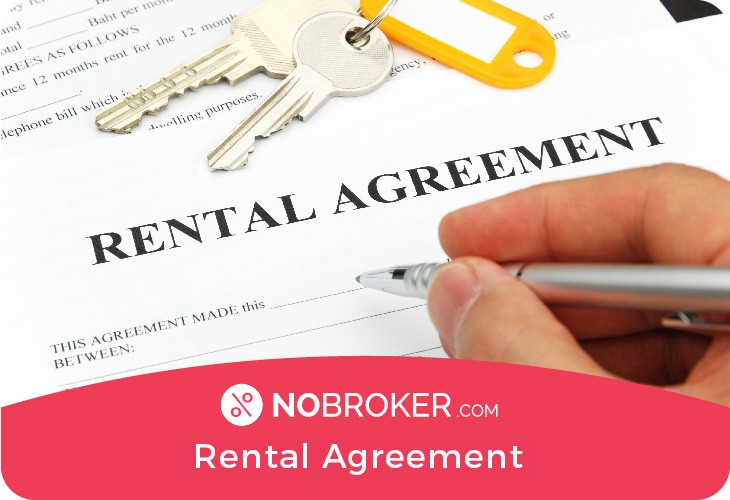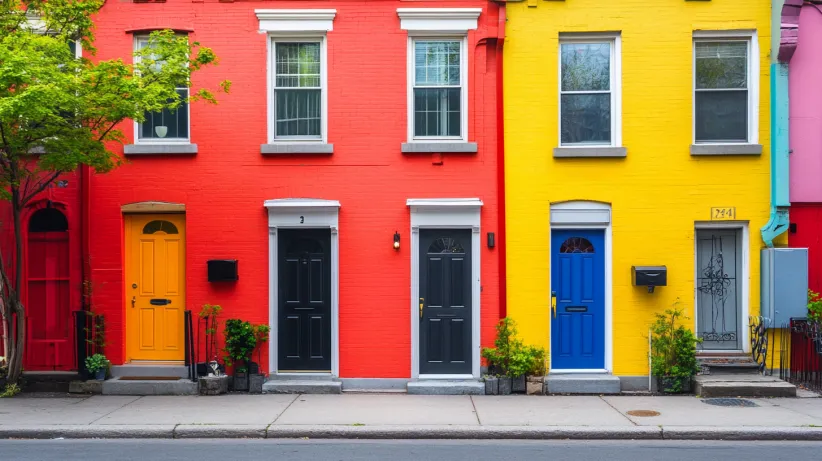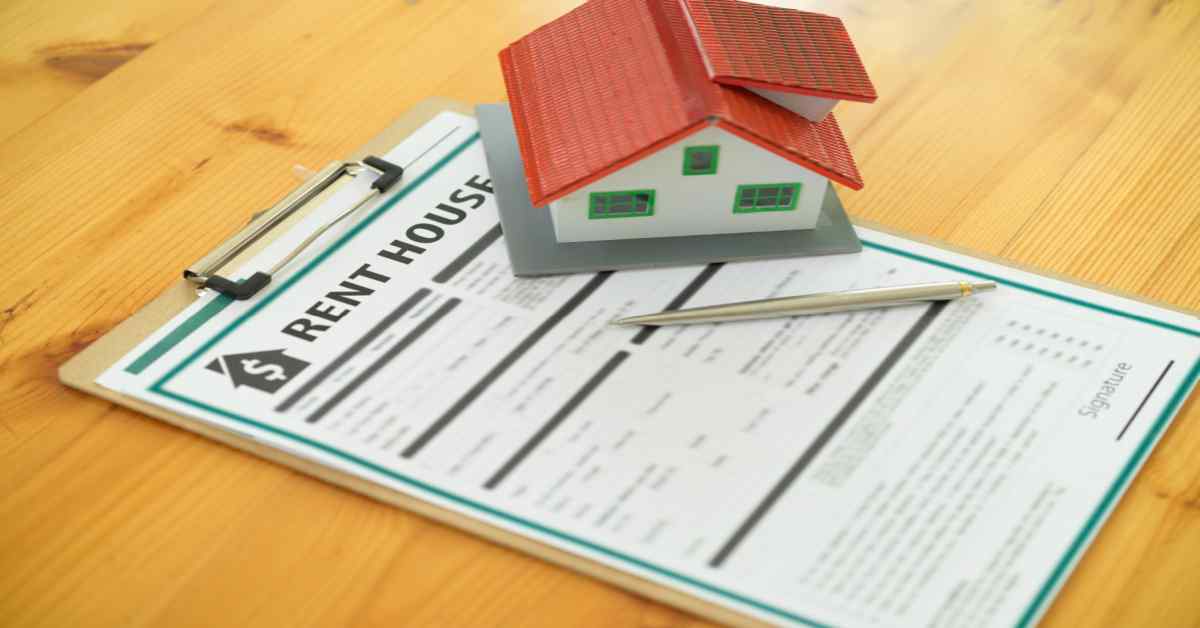Table of Contents
Quality Service Guarantee Or Painting Free

Get a rental agreement with doorstep delivery

Find the BEST deals and get unbelievable DISCOUNTS directly from builders!

5-Star rated painters, premium paints and services at the BEST PRICES!
Loved what you read? Share it with others!


Submit the Form to Unlock the Best Deals Today
Check Your Eligibility Instantly

Experience The NoBrokerHood Difference!
Set up a demo for the entire community

Tenant Super Relax Plan
Enjoy Hassle-Free Renting
 Full RM + FRM support
Full RM + FRM support Instant alerts & premium filters
Instant alerts & premium filters Rent negotiation & relocation help
Rent negotiation & relocation helpHow to Set the Right Rent for Your Property Based on Location, Market Demand, and Legal Guidelines 2025
Table of Contents
Whether you're a first-time landlord or a seasoned property owner, understanding how to set the right rent remains crucial. Determining the appropriate rental price can be challenging, too high means many won’t rent it, and too low means you might lose profit.
To strike the perfect balance, it's important to consider various factors, including market trends, the location of your property, and the amenities it offers. This article will discuss the tools to help you set competitive rental prices, explore the latest trends in the rental market, and highlight common mistakes to avoid. By following these tips, you can optimise your rental income and minimise risks.
Factors That Influence Rental Value Every Owner Must Know About
Rent prices are shaped by various economic and personal factors, and they can differ widely based on location and demand. Understanding the factors affecting rental value can help you make informed decisions when searching for a rental property.
Quality Service Guarantee Or Painting Free

Get a rental agreement with doorstep delivery

Find the BEST deals and get unbelievable DISCOUNTS directly from builders!

5-Star rated painters, premium paints and services at the BEST PRICES!
1. Location
The geographic location of a rental property is one of the biggest determinants of rent prices. Properties situated in metropolitan areas, business hubs, or near universities command higher rents due to accessibility. Amenities like shopping centres, public transport, parks, and entertainment options also increase rental demand, driving up prices.
2. Supply and Demand
If demand for properties exceeds supply, landlords can charge higher prices. On the other hand, in areas with a surplus of vacant units, the rent declines as landlords compete for tenants. Seasonal trends, migration patterns, and urban development also affect the supply-demand dynamics in the rental market.
3. Property Size and Condition
A property's size, layout, and overall condition play a role in determining rent. Spacious apartments with modern designs, well-maintained interiors, balconies, elevators, and security systems tend to attract higher rental prices(like gated societies). Older properties with outdated designs or requiring extensive repairs often have lower rents unless in a prime location(like standalone buildings).
4. Local Economic Factors
The economic situation of a region heavily influences rental costs. In areas with booming industries and job opportunities, tenants are willing to pay higher rents, increasing demand. Conversely, landlords may need to lower rental prices to accommodate affordability in regions experiencing economic downturns, layoffs, or declining wages. Inflation, cost of living, and interest rates also play a role.
5. Housing Market Trends
The overall real estate market trends impact rental pricing. When property values increase, landlords raise rents to match market conditions. Government policies on housing regulations, tax incentives, and interest rates also influence rental costs. External events such as recessions or housing crises can also cause rent fluctuations across different cities and regions.
Rent Pricing Tools & Calculators to use
When determining the right rent for your property or evaluating if you're paying a fair amount, rent pricing tools and online rent calculators can be incredibly helpful. They provide data-driven insights and simplify the process of rent estimation. Here are some of the top tools you can use:
1. NoBroker Rent Calculator
The NoBroker Rent Calculator is a free, user-friendly online tool for calculating rent. It utilises data from properties in your area and integrates advanced machine learning algorithms to predict rental values accurately. It considers location, property specifications, furnishing details, and amenities. Users can easily access this tool to gauge whether their rental rate is competitive and fair.
Steps to calculate rent using NoBroker Rent Calculator:
- Enter Location: You can begin by inputting the exact address of the property or marking its location on the map provided on the website.
- Provide Property Details: Add details such as the type of building (apartment, independent house, etc.), the number of bedrooms, and whether the property is furnished, semi-furnished, or unfurnished.
- Input Measurements: Include information on the property's size (in square feet), age, and the floor it is situated on.
- Add Amenities: Select the amenities available, such as a gym, air conditioning, a lift, parking, or security.
- Role & Rent: Specify whether you are a tenant or an owner. You can input that amount for a comparative evaluation if you're already paying or receiving rent. Once all inputs are provided, the tool analyses the data and offers insights on whether the rent is appropriate, underpriced, or overpriced.
2. Let's Rentz Rent Calculator
Let's Rentz is one of the versatile rent pricing tools in India that offers quick and accurate rental estimations. Users can input details like the location, property type, and features such as the number of bedrooms and available amenities. This tool also considers local market trends to refine its rent evaluations, making it ideal for landlords and tenants who want to ensure reasonable and competitive rates.
3. Rentometer
Rentometer is an intuitive tool that compares rental prices within a specific area. It gathers real-time data from surrounding properties and evaluates whether your rent is competitive, overpriced, or underpriced. Users can view comparative graphs and statistics, making it particularly helpful for negotiations or setting rental expectations.
4. Housing.com Rent Calculator
Housing.com provides a rent calculator specifically for the Indian market. It focuses on regional property trends to give accurate rent estimates. Users simply input property details like size, furnishing status, and location to receive an evaluation. It also provides insights into the rental demand and trends in different cities, making it a comprehensive resource for landlords and tenants alike.
Common Rent Mistakes Landlords Make
Many landlords make some common pricing errors that can lead to prolonged vacancies, low returns, or tenant dissatisfaction. Below are some mistakes landlords make while fixing rent:
1. Overpricing the Property
Setting rent too high may cause extended vacancies, resulting in lost income. Tenants compare prices; if your rent exceeds similar properties, they may look elsewhere. High rents also attract tenants with short-term leases who might leave sooner than expected.
2. Underpricing the Property
Renting at a low price may seem like a quick way to secure tenants, but it can lead to financial losses. If rent is too low, landlords might struggle to cover maintenance costs, property taxes, and repairs. Raising rent later can also be difficult, as tenants may resist increases.
3. Ignoring Market Trends
Rental prices fluctuate due to demand, local economic conditions, and seasonal shifts. Landlords who fail to adjust rent according to market trends risk losing potential income or deterring tenants. Competitive pricing requires regular evaluation of listings in the same area. Reviewing factors like inflation and neighbourhood developments ensures rent reflects actual market conditions.
4. Neglecting Property Condition
A property's condition heavily influences rent. If a rental unit has outdated fixtures, damaged flooring, or poor maintenance, tenants may not be willing to pay higher prices. Landlords should invest in improvements like fresh paint, quality furnishings, and reliable appliances to justify competitive rent. A well-maintained property attracts responsible tenants who value long-term residence.
5. Not Considering Additional Costs
Some landlords overlook hidden expenses when setting rent, leading to budgeting problems. Costs like maintenance fees, property management, utilities, and taxes should be accounted for when determining pricing. Transparent rent structures avoid disputes and ensure financial sustainability.
2025 Rental Trends to Watch
In 2025, the rental market is undergoing significant transformations driven by urban migration, changing lifestyles, and economic shifts. These changes reshape tenant preferences and influence landlord strategies across India and globally. Below are some rental market trends for 2025:
1. Sustainable and Eco-Friendly Properties
With growing environmental awareness, tenants are prioritising eco-conscious housing. Features like solar panels, energy-efficient lighting, and smart water-saving systems are increasingly desirable. Sustainable properties with green certifications attract renters who seek lower utility bills and environmentally responsible living. Landlords investing in green upgrades may benefit from incentives and long-term cost savings.
2. Work-from-Anywhere Movement
Remote and hybrid work models continue to influence rental preferences. More renters opt for homes with dedicated office spaces, strong internet connectivity, and proximity to coworking hubs. Suburban and rural areas with affordable yet well-connected properties are gaining traction. As companies embrace flexible work arrangements, demand for rentals in non-traditional business districts is rising.
3. Rising Rental Prices and Affordability Challenges
Rental prices are projected to continue rising, driven by inflation, urban population growth, and supply shortages. Tenants are struggling to balance housing costs with income levels. Affordable housing initiatives and government policies may shape rental trends. Renters are increasingly exploring alternative living arrangements, such as shared housing or moving to locations with lower living costs.
4. Short-Term and Flexible Rentals
Demand for short-term and flexible leasing options is growing, especially among digital nomads, corporate travellers, and seasonal workers. Fully furnished apartments and co-living spaces provide convenient housing solutions. Platforms like Airbnb and serviced apartment rentals are expanding, offering landlords new income streams. Flexible lease terms allow tenants to adapt their housing arrangements to changing needs.
5. Impact of Economic Policies on Rentals
Government regulations on property taxes, rent controls, and tenant rights will shape the rental landscape in 2025. Economic factors like interest rates and mortgage availability influence rental supply and pricing. Renters and landlords must stay informed about housing policies affecting affordability, lease agreements, and property investments. Legislative changes could impact rental market dynamics significantly.
Rent Negotiation Tips for Landlords
Effective rent negotiation is essential for landlords to maintain a steady income while fostering positive tenant relationships. Landlords can navigate discussions confidently by adopting strategic approaches, ensuring mutually beneficial outcomes. Below are some good rent negotiation tips to help you:
1. Know the Market Rates
Understanding current rental rates in your area is essential for setting competitive prices—research similar properties to gauge demand and avoid overpricing or underpricing. If rents rise due to economic conditions or housing shortages, landlords can justify higher rates while remaining attractive to prospective tenants.
2. Highlight Property Value
Tenants are more likely to accept a rent price if they see the value in the property. Owners should emphasise renovated interiors, security systems, parking spaces, or energy-efficient appliances. Proximity to amenities, public transport, and shopping centres also adds value. If the property offers unique benefits, landlords can position the rent accordingly.
3. Offer Flexible Lease Terms
Tenants appreciate flexibility, whether it’s the option for a longer lease or short-term arrangements. Alternatives such as month-to-month leases or rental discounts for extended contracts can help attract reliable tenants. Customisable lease terms ensure landlords meet market demands while maintaining steady occupancy rates.
4. Consider Incentives
Small perks can make a rental agreement more appealing. Offering a discounted first month, waiving maintenance fees, or including essential utilities can encourage tenants to agree to a slightly higher rent. Incentives give landlords an edge in competitive markets and establish goodwill with tenants, potentially leading to longer lease agreements.
5. Communicate Transparently
Negotiations should be open and honest. Clearly explain any rent increases, outline included expenses, and address tenant concerns professionally. Avoid hidden costs that could deter tenants. Open communication fosters trust, helping landlords retain long-term tenants and maintain positive relationships, reducing turnover rates and vacancy periods.
6. Screen Tenants Carefully
A thorough screening process minimises risks associated with late payments or tenant disputes. Verify employment status, rental history, and credit ratings before finalising agreements. Reliable tenants provide financial stability and maintain the property, reducing future complications. Conducting due diligence before negotiations ensures a smooth rental process.
Legal & Documentation Considerations
Ensuring proper legal and documentation compliance is essential for landlords to protect their rights and avoid disputes. From lease agreements to tenant verification, several factors must be considered. Here are eight key legal and documentation considerations for landlords:
1. Drafting a Legally Valid Rent Agreement
A comprehensive rental agreement is essential to clearly define the responsibilities of both the landlord and the tenant. It should include rent amount, payment schedule, security deposit details, maintenance clauses, and termination conditions. Registering the agreement legally protects both parties and prevents disputes. Rent escalation provisions can also be added to account for future increases.
2. Tenant Background Verification
Landlords should verify identity documents, employment status, and previous rental history. Contacting former landlords for feedback can provide insights into tenant reliability. Some locations may require police verification for added security. A thorough screening process ensures a trustworthy tenant and minimises eviction risks.
3. Security Deposit and Payment Terms
Clearly outline security deposit requirements and payment schedules. The agreement should specify refund conditions, damages deductions, and delayed payment penalties. Providing receipts for transactions prevents misunderstandings. Some landlords hold deposits in separate accounts to ensure legal compliance and maintain financial integrity throughout the tenancy.
4. Property Insurance Coverage
Landlords should invest in property insurance to protect against unforeseen damages, natural disasters, and tenant-related incidents. Some rental properties also include coverage for lost rental income due to emergencies. Choosing the right insurance safeguards financial interests and helps landlords manage unexpected costs.
5. Property Condition Documentation
A detailed inventory and condition report helps prevent disputes related to damages at the end of the lease. Landlords should document property features through dated photographs and written descriptions before tenant occupancy. Having both parties sign a checklist ensures agreement on the property's initial condition, minimising conflicts during the move-out process.
6. Maintenance and Repair Responsibilities
Defining maintenance roles within the rent agreement clarifies who handles specific repairs. Minor fixes like plumbing or appliance upkeep may be assigned to tenants, while structural repairs remain the landlord's responsibility. A clear reporting and resolution system ensures timely repairs, improves tenant satisfaction, and reduces conflicts related to maintenance obligations.
7. Utility and Bill Transfer Guidelines
Utility payments should be clearly defined in the lease agreement. Landlords may keep utilities under their name or transfer billing responsibilities to tenants. Outlining water, electricity, and gas costs prevents disputes and ensures timely payments. Agreements should specify whether common-area charges or service fees are included in the rent.
8. Compliance with Local Rent Control Laws
Understanding rent control regulations is crucial for landlords to ensure fair pricing and legal compliance. Some cities have restrictions on annual rent increases, eviction procedures, and tenant rights. Keeping up with housing laws protects landlords from legal penalties and helps them set rent prices within permissible limits while maintaining profitability.
Real Examples: Rent Fixing in Different Cities
Setting the right rent can vary significantly depending on the city, property type, and market conditions. If you're wondering how to calculate rent for property, here are some real examples of rent fixing in various cities, highlighting the average rent and the key factors influencing pricing.
| City | 1 BHK Rent | 2 BHK Rent | 3 BHK Rent | Rent Range | Key Factors |
| Mumbai | ₹25,000 | ₹40,000 | ₹60,000 | ₹15,000 - ₹1,00,000 | High demand due to business hubs, the Bollywood industry, premium localities, and proximity to commercial centres. Limited space and luxury housing options contribute to higher rental prices. |
| Delhi | ₹18,000 | ₹25,000 | ₹40,000 | ₹10,000 - ₹70,000 | Government institutions, metro connectivity, and corporate hubs make Delhi desirable. Prices vary widely based on neighbourhood prestige, accessibility, and proximity to commercial zones or educational institutions. |
| Bangalore | ₹20,000 | ₹30,000 | ₹45,000 | ₹12,000 - ₹80,000 | IT-driven demand, modern infrastructure, and a startup ecosystem influence rental rates. Popular areas near tech parks and coworking spaces experience higher rents, while suburban locations offer affordability. |
| Chennai | ₹15,000 | ₹22,000 | ₹35,000 | ₹8,000 - ₹60,000 | Coastal appeal, affordable residential projects, and cultural significance shape rental trends. Well-connected localities near business hubs and educational institutions command higher prices. |
| Hyderabad | ₹12,000 | ₹20,000 | ₹30,000 | ₹7,000 - ₹50,000 | Hyderabad's rapidly growing tech sector, emerging business districts, and relatively low cost of living make it an affordable yet desirable city for rentals compared to other metro areas. |
| Pune | ₹18,000 | ₹28,000 | ₹38,000 | ₹10,000 - ₹65,000 | Educational institutes, IT parks, and startup culture fuel demand. Young professionals and students contribute to competitive pricing in key areas, while suburban locations remain budget-friendly. |
| Kolkata | ₹10,000 | ₹18,000 | ₹25,000 | ₹6,000 - ₹45,000 | Historical significance, commercial hubs, and affordable living conditions maintain stable rent trends. Local infrastructure and neighbourhood connectivity impact rental costs. |
How NoBroker Can Help?
Setting the right rent for your property involves carefully balancing market research, property value, and tenant demand. Consider comparable rental rates, property conditions, and location factors if you're wondering how to set the right rent. This approach ensures a fair and competitive price that attracts quality tenants while maximising your returns.
If you want to rent out your property without the hassle, NoBroker can help. Our expert market insights, tenant management services, and hassle-free rent collection ensure you get the right rental value while maintaining a stress-free experience. Let us take care of the details so you can enjoy the benefits.
Frequently Asked Questions
Ans: In 2025, landlords can revise rent based on the terms stated in the lease agreement, usually with an annual increase of 5–10%. Any change must be communicated through a formal written notice or by revising the agreement, ensuring compliance with local laws.
Ans: Rent control laws in India limit the amount a landlord can charge for rent and the frequency of rent hikes. These laws apply to properties built before a certain year and offer tenant protection. Newer properties typically fall outside these restrictions.
Ans: Landlords can charge extra for tenants with pets or long-term guests, provided this is explicitly mentioned in the rental agreement. It's crucial to include clear terms in the agreement to avoid misunderstandings or legal disputes later.
Ans: While landlords can ask tenants to cover minor maintenance costs, such as cleaning or small repairs, major property maintenance or structural repairs are generally the landlord's responsibility. Ensure maintenance clauses are clear in the rental agreement to prevent conflicts.
Ans: If a tenant refuses a rent increase, you can try negotiating a mutually acceptable amount. If the tenant refuses even after proper notice, you may choose not to renew the lease or proceed with legal eviction following the legal process.
Loved what you read? Share it with others!
Most Viewed Articles

Leasing Commercial Property to Large Franchises for Maximum Profit in India 2025
May 28, 2025
42555+ views

Rental Agreements in India: Format, Rules, Online Registration for Tenants and Landlords
May 28, 2025
36042+ views

Gurugram Metro Routes: Map, Stations, Timings and Latest Updates 2025
January 31, 2025
32569+ views

Tax on Rental Income in India: Rules, Deductions & How to Save Tax (2025)
January 31, 2025
24391+ views

Leave and License Agreement: Legal Aspect and Format
January 31, 2025
23920+ views
Recent blogs in
Rental Agreements in India: Format, Rules, Online Registration for Tenants and Landlords
May 28, 2025 by Vivek Mishra
Leasing Commercial Property to Large Franchises for Maximum Profit in India 2025
May 28, 2025 by Jessica Solomon
May 2, 2025 by Krishnanunni H M
Is Being a Landlord Worth It in 2025? Pros and Cons
April 29, 2025 by Manu Mausam





Join the conversation!